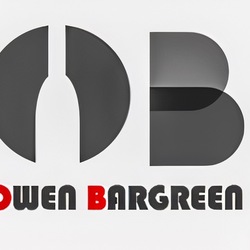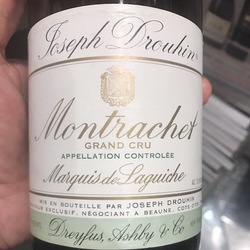Forty Five & Vine
Castello di Volpaia
Riserva Chianti Classico Sangiovese 2010
Last tried in March of ‘18 at 8.9...with note of “early stage of drinking window...touch of modernity.” Forty-five months in we are definitely within the wine’s drinking window; don’t foresee further development. Typical CCR tasting notes but atypical added richness. Pairing it with homemade pizza. — 4 years ago
Château d'Yquem
Sauternes Sémillon-Sauvignon Blanc Blend 1980
The 1980 vintage in Sauternes was challenging to say the least but Chateau D’Yquem has crafted one of the shining stars of the vintage. Aromatically quite expressive, the Sauternes takes the lead with candied ginger, lychee, apricot and shades of bananas foster that all sing in unison. The palate comes off with an unusual combination of sweet and sour tones, with a strong vein of salinity that races through the core of quince, sour apricot, vanilla creme brûlée and roasted pineapple flavors. Texturally elegant, this is far less on the unctuous side of D’Yquem, but has a beautiful feeling of refinement, freshness and elegance. Still humming at the forty year mark, the 1980 D’Yquem will provide drinking enjoyment for at least another five to ten years. Drink 2020-2027- 94 — 6 years ago
Ridge Vineyards
Lytton Springs Dry Creek Valley Zinfandel Blend 2022
On the nose black raspberry, black cherry, Asian five spice, some black tea. Good dose of acidity for a zin based wine; some tannin as well. More black raspberry, black cherry, hint of smoke, blackberry and spice on the palate. I don’t usually go for this type of wine (higher etoh, somewhat warmer and riper style) however given the old vine character, Ridge is a producer I do come back to every once and a while. Did hit the spot on a cold night. — a year ago
Kanonkop Estate
Cabernet Sauvignon 2015
A wine that more than lives up to its reputation, this estate Cabernet from Kanonkop in South Africa is a tremendous flag-bearer for the quality of Bordeaux blends (or, as in this case, single varietals) in the Cape - and particularly in that iconic region Stellenbosch.
An exuberant nose that leaps from the glass and features cassis, fig, cinnamon, some garam masala and cigar box, with more than a gentle tug of graphite. A touch of tomato vine completes what is a very harmonious aroma - and quite an austere one at that. It was ten minutes before I took a sip.
The palate is even more giving, after a two hour decant, with incredibly concentrated flavours of red cherry, blackcurrant and plum, and a lovely undercurrent of dark chocolate and vanilla. This is seriously accomplished stuff, with more than enough backbone to age, and a very long finish. I would love to try this in ten years - even five - but only bought the one bottle so that’s a pipe dream. If this was the Médoc, you’d be thrilled. Truly, an astonishingly good wine.
96+ — 4 years ago
Macchia
Mischievous Old Vine Lodi Zinfandel 2017
Deep ruby hue with medium saturation. Aromas and flavors of blackberry jam, oak, plum, and vanilla. Full body; rich, ripe tannins; and medium-low acidity. An inviting nose with a plush palate and a smooth, lingering finish. Sumptuous and dangerously drinkable. A blend from five Lodi vineyards. — 6 years ago
Caillard
Mataro 2015
A bright ruby red. Black and blue fruits, Five spice and a tarry note. My last of 6 - and possibly the best. See my Delectable note in April 2022 for the first of 6. I am always in admiration of Andrew Caillard MW and his multiple talents when I look at this label which he painted. A beautiful expression of old vine Barossa Mataro (Mourvèdre). — a year ago


Robert Mondavi Winery
Reserve Napa Valley Cabernet Sauvignon 1979
My friend graciously shared his 1979 Robert Mondavi Winery ‘Reserve’ Cabernet Sauvignon(WWB, 92), a wine I had not visited since I was at the winery several years back. The nose is highly Bordelaise with layers of red currents and red bell pepper with shades of dusty terroir that all mingle in the glass. The wine still has a good degree of freshness and a core of dark fruits with red bell pepper, damp earth and sandalwood tones. This now forty one year old wine has aged very gracefully. While not in its prime, it will provide drinking enjoyment over the next five to ten years — yet another resounding success from this Oakville estate. Drink 2020-2025- 92 — 6 years ago







Norma Normington
Probably one of my very favorites. A gorgeous wine from old vine grapes with five percent of white Muscaldelle which really rounds out the finish. Amazing 🥂 — 10 months ago